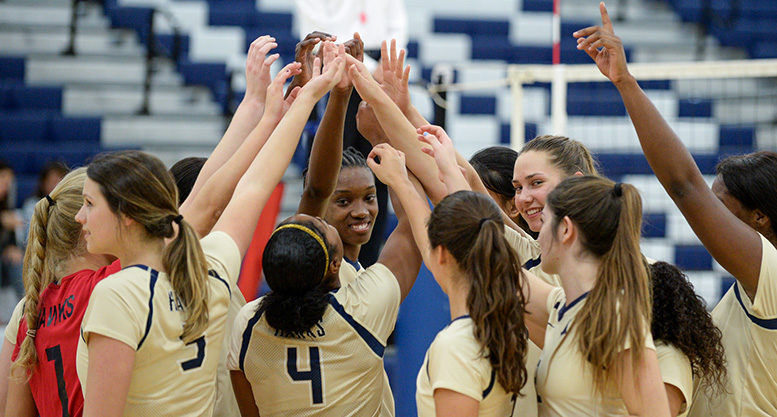Community college leaders would be hard pressed to find a federal statute that has had such a tremendous impact, yet is as widely misunderstood — even reviled — as Title IX of the Education Amendments of 1972.
Simply put, the law states that any educational program or activity receiving federal funding cannot discriminate on the basis of gender. While Title IX is most often associated with high school and college athletics, having paved the way for millions of women to participate in competitive sports, it also prohibits discriminatory practices in academics and all other aspects of education. This includes ensuring a campus environment that is free from sexual harassment or assault.
This article comes from the August/September issue of AACC’s Community College Journal. Read the entire issue online.
“I don’t think women would be anywhere near where they are today without Title IX,” says Valerie McMurtrie Bonnette, author of many Title IX guidance documents for the U.S. Education Department’s Office of Civil Rights and founder of the Title IX consulting firm Good Sports Inc. “Title IX’s impact has been monumental.”
But the fact that entire careers can be made from helping colleges comply with Title IX speaks to the law’s complexity. Fairly or unfairly, Title IX has been the subject of intense criticism from those who believe it has led to unjust treatment of men in the pursuit of gender equity. College leaders are also watching closely for new guidance from the Trump administration, expected this fall, on how they should respond to allegations of sexual misconduct on their campuses.
Although fewer than half of community colleges have intercollegiate sports programs, and most don’t have on-campus housing, Title IX should still be a focus area on community college campuses. Compliance with the law requires ongoing communication, training and establishing the right campus culture, college leaders say.
Title IX and athletics
The National Junior College Athletic Association represents 518 two-year colleges with intercollegiate athletics programs in every state except California. Together, these colleges have just under 60,000 student athletes — about 46 percent of whom are women.
“Title IX plays a key role in ensuring equal opportunities for both men and women to participate in athletics,” says NJCAA Executive Director Chris Parker.
Hillsborough Community College in Florida has had an intercollegiate athletics program for many years, with students competing in baseball, softball, men’s and women’s basketball, tennis and volleyball. Although the percentage of students who take part in athletics is small — in 2016-17, only 89 of the college’s roughly 28,000 students played a sport — Title IX Coordinator Elina Bivins has no doubt that the law has opened doors for women at HCC and beyond.
Yet, nearly 50 years after Title IX was enacted, there is still confusion about what it requires. According to Good Sports, the law follows the same general approach as all civil rights legislation by requiring equal access to athletic programs and equal treatment of those who participate. To address access, there is a three-part test that gives institutions three different ways to comply. Colleges only need to meet one of these three requirements.
- Test one is proportionality: Ensure participation in athletics for women and men at rates that are proportional to their enrollment.
- Test two is the continued expansion of programs for the underrepresented sex: Show that opportunities have been added for the underrepresented sex as their interests and abilities have evolved.
- Test three is full accommodation of the underrepresented sex: Offer every team for which there is sufficient interest and ability, as well as sufficient competition in the geographic areas where the college normally competes.
“Much confusion has arisen because opponents and advocates of gender equity have both stated that proportionality is the only way to comply,” Good Sports says on its website. “It is not. If one gender is participating at a rate that is less than their rate of enrollment … then school officials have two other methods to show that their actions did not cause the underrepresentation.”
In fact, two-thirds of colleges comply with Title IX by meeting test three, Bonnette says.
Aside from the three-part test to ensure equal access to athletic opportunities for both sexes, there are 12 areas that colleges must consider with respect to equitable treatment of student athletes: scholarships, coaching, facilities, recruitment, equipment, scheduling, team travel, tutoring, medical services, housing and dining, support services and publicity.
Addressing sexual harassment
Title IX also prevents gender-based discrimination in academics, including sexual harassment and assault. An analysis of Title IX complaints filed against colleges and universities from 1994 to 2014 reveals a shift in how the law has been used, with a surge in the number of complaints alleging harassment during this period.
“Filings started to rise after 2000 and exploded after 2009, while sexual harassment complaints nearly equaled academic and athletic filings for the first time in 2014,” writes Yale University graduate student Celene Reynolds, who published her findings in the journal Social Problems.
Although Reynolds only looked at data from four-year institutions, it’s clear from her analysis that the use of Title IX to combat sexual harassment is on the rise. But proposed new rules from the Trump administration could change that.

